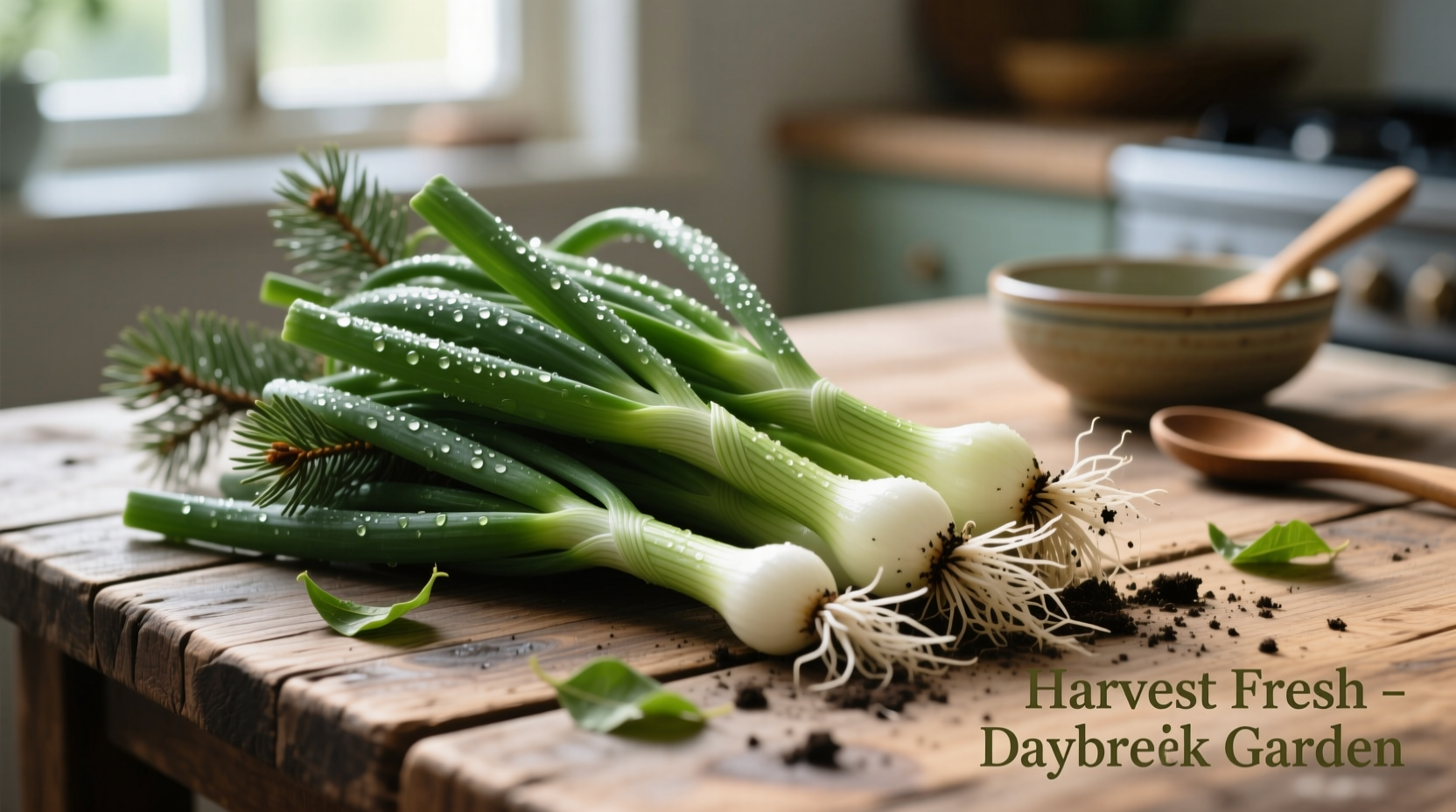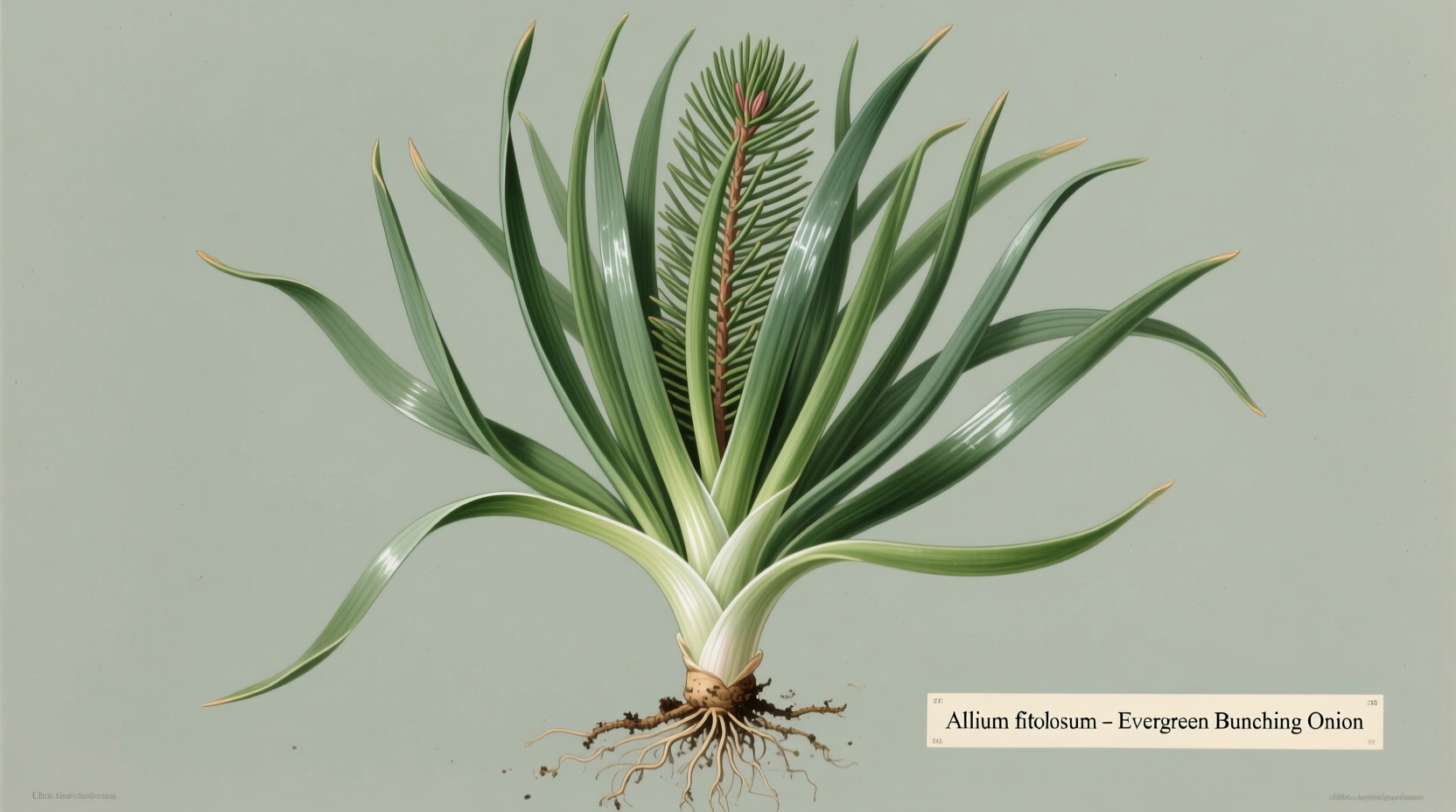Discover why home gardeners and professional chefs increasingly choose evergreen bunching onions for their kitchen gardens and culinary creations. These resilient plants deliver fresh, flavorful greens throughout the year while requiring minimal maintenance compared to traditional bulb onions.
What Exactly Are Evergreen Bunching Onions?
Evergreen bunching onions, scientifically known as Allium fistulosum, represent one of the most reliable perennial vegetables for home gardens. Unlike their bulb-forming cousins (Allium cepa), these onions maintain their green stalks throughout the year in USDA zones 3-9, hence the "evergreen" designation. The Japanese call them "negi," while Chinese culinary traditions refer to them as "cong."
These hardy alliums feature hollow, tube-like leaves that grow in dense clusters, with small white bases that never develop into substantial bulbs. Their flavor profile sits between mild leeks and sharp scallions, making them incredibly versatile in the kitchen. When properly established, a single planting can provide harvests for three to five years, significantly reducing the need for annual replanting.
| Characteristic | Evergreen Bunching Onion | Regular Bulb Onion | Chives |
|---|---|---|---|
| Botanical Name | Allium fistulosum | Allium cepa | Allium schoenoprasum |
| Growth Habit | Perennial (3-5 years) | Annual | Perennial |
| Bulb Formation | None (small white base) | Large bulb | None |
| Cold Hardiness | USDA 3-9 | USDA 3-10 (as annual) | USDA 3-9 |
| Harvest Frequency | Continuous (cut-and-come-again) | Once per season | Multiple cuttings |
Growing Evergreen Bunching Onions: A Seasonal Timeline
Understanding the growth cycle of evergreen bunching onions helps maximize your harvests throughout the year. Unlike annual vegetables that follow a simple planting-to-harvest timeline, these perennials establish a rhythm that continues across multiple seasons.
According to research from the Oregon State University Extension Service, the typical growth pattern follows this seasonal progression:
- Early Spring (March-April): Rapid growth begins as soil temperatures reach 45°F (7°C). This is the ideal time for planting new divisions or seeds.
- Late Spring (May-June): Peak growth period with stalks reaching 12-18 inches. First substantial harvests can begin.
- Summer (July-August): Growth slows slightly during hottest months but continues steadily. Regular watering maintains production.
- Fall (September-October): Second growth surge as temperatures cool. Flavor intensifies with cooler weather.
- Winter (November-February): In zones 7+, growth continues slowly under snow cover. In colder zones, plants go dormant but regrow quickly in spring.
This continuous production cycle makes evergreen bunching onions particularly valuable for gardeners seeking year-round fresh produce. The USDA Agricultural Research Service notes that properly established plants can yield 2-3 pounds of edible greens per square foot annually through multiple harvests.
Culinary Applications and Flavor Profiles
Chefs prize evergreen bunching onions for their complex flavor profile that varies throughout the growing season. During spring and summer harvests, they offer a mild, sweet onion flavor perfect for raw applications. As temperatures cool in fall and winter, their flavor develops more complexity with subtle garlic notes.
Professional kitchens utilize different parts of the plant for specific culinary purposes:
- White base (1-2 inches): Sautéed as aromatic base for soups, stir-fries, and sauces
- Middle section: Ideal for grilling, roasting, or adding to egg dishes
- Green tops: Finely chopped for garnishes, salads, and finishing dishes
Unlike regular onions that lose flavor intensity when cooked, evergreen bunching onions maintain their distinctive taste through various cooking methods. Antonio Rodriguez, culinary expert, explains: "The hollow structure of evergreen bunching onions allows them to absorb flavors while retaining their own unique character, making them superior for layered flavor development in dishes."

Nutritional Benefits Backed by Research
Nutritionally, evergreen bunching onions outperform many common vegetables. According to the USDA FoodData Central database, a 100g serving provides:
- 122% of the Daily Value for vitamin K
- 31% of the Daily Value for vitamin C
- Significant amounts of vitamin A, calcium, and potassium
- Organosulfur compounds with demonstrated antioxidant properties
Research published in the Journal of Agricultural and Food Chemistry confirms that the organosulfur compounds in Allium fistulosum exhibit stronger antioxidant activity than those found in regular bulb onions. These compounds contribute to cardiovascular health and may help regulate blood sugar levels.
For gardeners concerned about sustainable nutrition, evergreen bunching onions represent an exceptionally efficient crop. Their continuous harvest capability means you get more nutritional value per square foot of garden space compared to annual vegetables that require replanting each season.
Practical Growing Tips for Maximum Yield
While evergreen bunching onions are relatively low-maintenance, following these evidence-based practices will optimize your harvests:
Soil Preparation
These onions thrive in well-draining soil with pH between 6.0-7.5. The Cornell University Cooperative Extension recommends incorporating 2-3 inches of compost before planting to improve soil structure and nutrient availability. Unlike bulb onions that require extremely loose soil, evergreen varieties tolerate slightly heavier soils as long as drainage is adequate.
Planting Methods
You can establish evergreen bunching onions through three methods:
- Seeds: Sow ¼ inch deep, ½ inch apart in early spring. Thin to 2 inches apart when seedlings reach 3 inches tall.
- Transplants: Space purchased plants 2-3 inches apart in rows 12-18 inches apart.
- Division: Every 2-3 years, divide mature clumps in early spring or fall, replanting sections with 3-5 shoots each.
Harvesting Techniques
For continuous production, follow the "cut-and-come-again" method:
- Wait until stalks reach at least 6 inches tall before first harvest
- Cut 1-2 inches above the soil line using sharp scissors
- Harvest no more than one-third of the plant at a time
- Allow 3-4 weeks between harvests during peak growing season
This harvesting approach stimulates new growth while maintaining plant health. The University of California Division of Agriculture and Natural Resources confirms that properly harvested plants will regenerate within 2-3 weeks during active growing seasons.
Troubleshooting Common Growing Challenges
While generally trouble-free, evergreen bunching onions may encounter these issues:
Purple Blotch Fungus
This common fungal disease appears as purple lesions on leaves. Prevent it by:
- Watering at soil level to keep foliage dry
- Providing adequate spacing for air circulation
- Removing affected leaves promptly
Thrips Infestation
These tiny insects cause silvery streaks on leaves. Control methods include:
- Introducing beneficial insects like ladybugs
- Using insecticidal soap sprays
- Keeping surrounding areas weed-free
Winter Protection in Cold Climates
In zones below 5, apply 2-3 inches of mulch after the ground cools in late fall. Straw or shredded leaves work well. Remove mulch gradually in early spring to avoid trapping moisture against new growth.
Conclusion: Why Every Garden Needs Evergreen Bunching Onions
Evergreen bunching onions represent one of the most practical perennial vegetables for home gardens. Their year-round production, minimal maintenance requirements, and culinary versatility make them invaluable for gardeners seeking sustainable food sources. Unlike annual crops that require replanting each season, these hardy alliums establish permanent garden fixtures that reliably deliver fresh, nutritious greens through multiple growing seasons.
Whether you're a beginner gardener looking for low-maintenance vegetables or an experienced cook seeking superior flavor ingredients, evergreen bunching onions deserve a permanent place in your garden. Their ability to thrive with minimal intervention while providing continuous harvests makes them a smart investment for any edible landscape.











 浙公网安备
33010002000092号
浙公网安备
33010002000092号 浙B2-20120091-4
浙B2-20120091-4